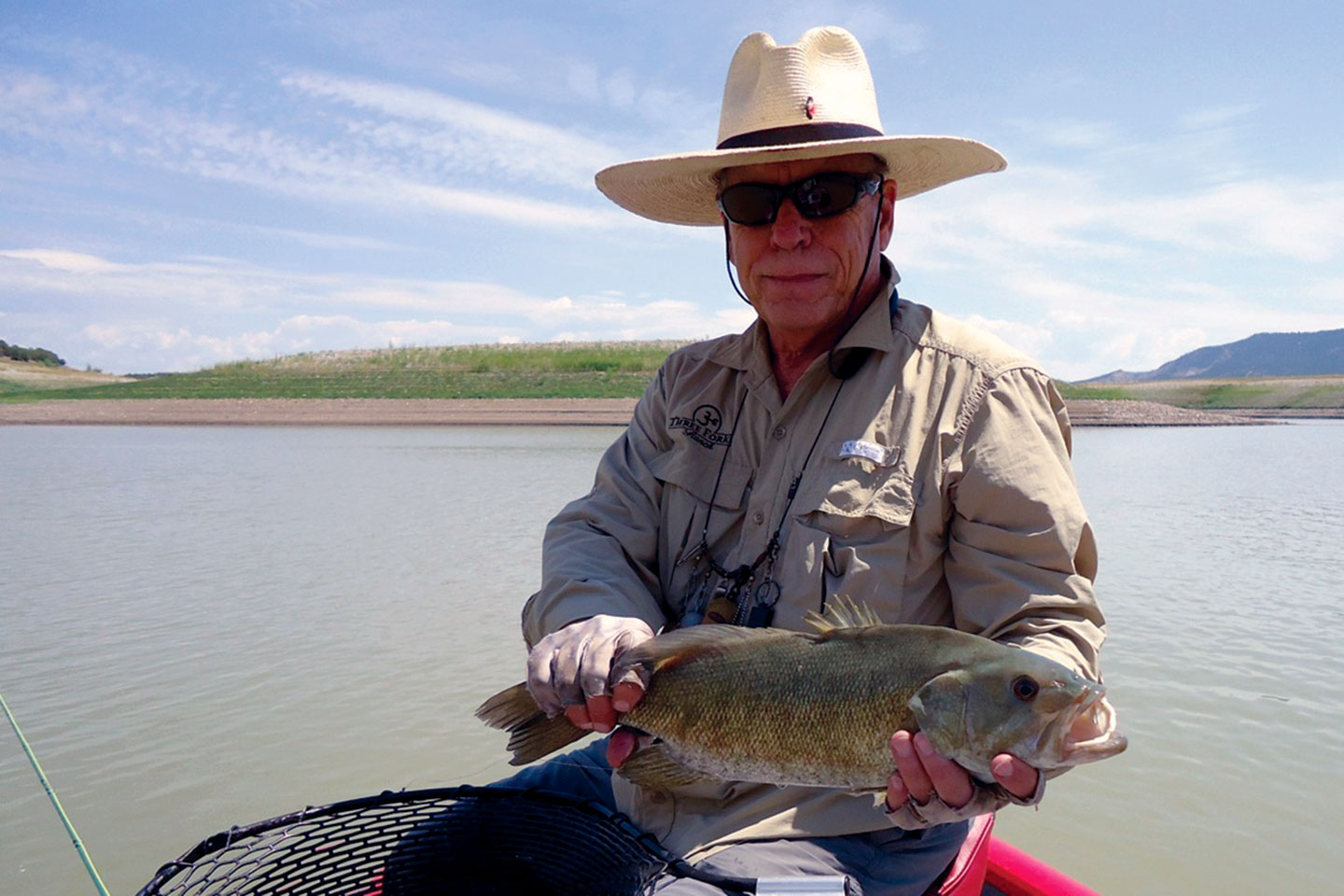I am a member of an exclusive fly fishing club from Texas, known as the Wulff Pack. (The only requirement for membership is that you can fog a mirror.) Recently I was assigned the task to be part of an exploratory group sent to the state of Arkansas to fly fish the White River. Here-to-fore, this group has always fly fished in the mountains of Montana, Wyoming, New Mexico, and Colorado. The group thought going to the White River, below Bull Shoals Reservoir, this summer would be a great change of pace. So they had four of us go check it out. It was great, except for one thing, the weather. We had: rain, lightening, thunder, cold temperatures, and wind. That was the first day. The second day was just cold. In addition to the weather, water from the lake was being released into the river at a rate of 17,000 cubic feet a second (CFS). The flows can go as high as 26,400 CFS. It was challenging. The two saving graces were the lodge where we stayed, and the fly fishing. We stayed at a lodge in Cotter, Arkansas, above the White River, known as the White River Inn. The Inn was spectacular with great food, good wine, comfortable beds, and wonderful hosts and owners. If you go to this area you should check out the White River Inn. The second grace was the fly fishing. Despite the weather we caught really large native brown trout and stocked rainbows. In fact, I caught the biggest brown trout I have ever caught.
The White River is 722 miles long and flows from south central Missouri, through Arkansas and ends as it enters the Mississippi River. Along the river’s path it goes through multiple lakes created by eight dams. Due to its fluctuating flows it has been described in opposite ways. Outdoor Life in February 2004 called it, “One of the six deadliest fishing waters in the country.” Whereas, Trout Magazine in 1998 named it one of the “Top 20 of 101 best trout streams in the U.S.” I guess how it is viewed is in the eyes of the beholder. This beholder thought it was great.
With the water as high and fast as it was, we had to fish using my least favorite method. We had to use nymphs. Not only were we casting two nymphs and a bobber, they were attached to the end of a 15-foot leader. Further, we used a 10-foot, 7-weight, fly rod, not my usual rig. However, catching those big browns made the equipment acceptable.
We fished this set-up from a 20-foot long boat, but it wasn’t just any boat. The boat had an outboard motor on the stern. However, instead of a prop on the motor it had a jet drive. This allows the boat and motor to operate in a variety of water levels without damaging the motor due to low water or hidden obstacles. The boat was also equipped with oars and a rowing seat for the guide. With water leaving the dam at 17,000 CFS, rowing against it would be impossible. So, we would motor up to where we wanted to start fly fishing, then drift down stream while the guide used the oars to keep us in position. Then motor somewhere else and again drift. I thought it was a good way to cover lots of water.
According to numerous articles found on the internet, the best dry fly fishing is from late August into December. Given the size of the fish that we caught, using a size-20 Parachute Adams would be counterproductive. I think hoppers, stimulators, Madam X’s, or Royal Wulffs, in sizes that old curmudgeons can tie on without using magnifiers, is best. If nymph fishing for really large browns is what you want to do, be there in the spring. Also, check the flows, the higher they are, the bigger the fish.
As always, when fly fishing in the South and Southeast, when your host says, “y’all come back, ya hear” they mean it. The Wulff Pack is headed that way in August.

